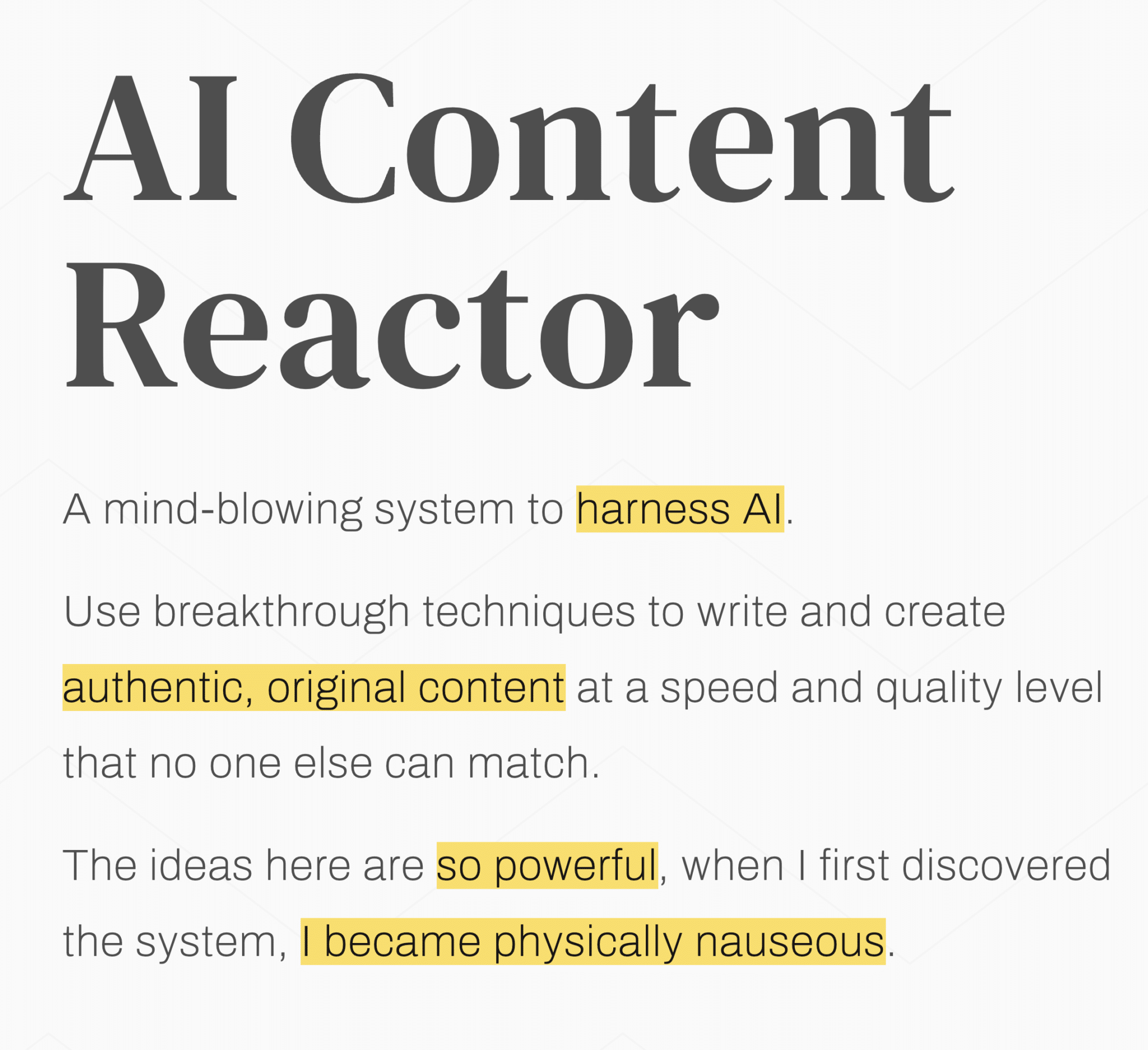Scarcity is a powerful psychological principle that significantly influences human behavior and decision-making. Coined by Dr. Robert Cialdini in his 1984 book Influence: The Psychology of Persuasion, this concept highlights how we place higher value on things we perceive to be limited or rare.
Over the decades, this principle has evolved alongside neuroscience and digital marketing advancements. Scarcity marketing has become a critical strategy to optimize sales and customer engagement.
Table of contents
The Psychology Behind Scarcity Marketing
At its core, scarcity marketing uses our fear of missing out (FOMO). When people believe a product, service, or opportunity is in limited supply, they want it more. This psychological response is deeply rooted in human evolution, where scarcity threatens survival. Today, this primal instinct translates into consumer behavior, driving urgency and influencing purchasing decisions.
Research in behavioral economics tells us that scarcity triggers a sense of urgency and loss aversion, both potent psychological motivators. For instance, when faced with a countdown timer or a low-stock alert, consumers are more likely to make impulsive purchases, fearing they might miss out if they delay their decision.
How Scarcity Shapes Choices and Behaviors
Scarcity fundamentally alters how we think and behave, not just influences what we want. Understanding this psychological shift reveals why scarcity is such a powerful force in everyday life and marketing.
Cognitive Impact
When resources feel limited, it can narrow our mental bandwidth. This focus on immediate needs can make it challenging to plan, think creatively, or solve complex problems.
Behavioral Shifts
Scarcity often triggers a survival mindset. As we learned in the 2019 pandemic, the survival mindset can lead to hoarding, intense competition, or self-preserving behaviors, all driven by the fear of running out.
Perceived Value
When something is scarce, it naturally feels more valuable. The perception of higher value can drive demand, influencing purchasing decisions and shaping consumer priorities.
Decision-Making Dynamics
Scarcity can push people to take bigger risks to secure what they need or avoid losing out. It can also lead to snap judgments, sometimes at the expense of long-term goals.
Mental Health Effects
Ongoing scarcity is stressful, and the effects are similar to working all the time. Scarcity contributes to anxiety, burnout, and a generally negative outlook, impacting overall well-being.
Social Connections
Scarcity can also lead to isolation. The stress of not having enough can reduce the time, energy, or trust needed to maintain social bonds.
As you can see, scarcity is a powerful psychological force that can reshape how people think, act, and connect. More than economics, it influences everything from daily decisions to long-term life choices.
Scarcity in Digital Marketing: Creating Urgency and Driving Conversions
Modern digital marketing uses this principle extensively. No doubt you’ve seen phrases like “Only a few left,” “Limited time offer,” or “Exclusive access”. All of these are designed to trigger quick decision-making.
Amazon’s low-stock notifications are a good example. Airline booking platforms displaying only a few seats left and e-commerce flash sales are also classic examples of scarcity tactics in action. Leveraging the fear of missing out (FOMO) often leads to higher conversion rates and increased sales.
3 Key Scarcity Marketing Tactics
The common approaches below tap into FOMO and increase the perceived value of a product, making customers more likely to convert on the spot.
- Offering a restricted number of items or exclusive collections creates a sense of rarity.
- Using countdown clocks, flash sales, or “almost gone” notifications adds urgency.
- Positioning products as exclusive or VIP-access-only heightens their appeal.
Let’s look at a few real-world scarcity marketing examples.
Flash Sales
Cyber Monday or Black Friday deals are flash sales that drive a ton of conversions. In 2024, Cyber Week accounted for ~$41.1 billion in online spending, which is about 17% of the total holiday season for online sales. Online shoppers spent an average of $11.3 million per minute between 10 am and 2 pm on Black Friday. They’re short, high-impact promotions for quick conversions.
Low Stock Alerts
Inventory cues like “Only three left” create a sense of urgency. For instance, FashionHub, an online clothing retailer, experienced a 20% increase in sales by notifying customers about limited stock items.
Exclusive Collections
Limited-edition product lines generate buzz and exclusivity. “You’re special if you have this product.” A study published in the Journal of Brand Management found that exclusivity and rarity significantly increase a person’s perceived value of luxury products. As mentioned before, the higher the perceived value, the more that value influences their purchasing decisions.
VIP Access
Offering loyal customers early access to products and special events builds a sense of privilege and urgency. Dash Drinks is a good example. The company provides its VIP customers with early access to exclusive product drops through SMS campaigns. Providing this VIP access to their SMS subscriber list gave them a 12% conversion rate.
Countdown Timers
Real-time counters that tick down to a sale’s end are a visual representation of urgency, encouraging impulsive last-minute purchases. Studies show countdown timers can significantly boost conversion rates.
For example, the Diamond Store updated their Black Friday sales email (already a high-converting sale, remember). Including a countdown timer increased their click-to-open rate by 171% and boosted their conversion rate by 400%.
Personalized Scarcity
Building your scarcity messages based on customer behavior makes them more relevant and effective. For instance, showing “Only two items left in your size” to a shopper increases the likelihood of purchase by making the scarcity personally significant.
Social Proof and FOMO
Highlighting high demand or limited quantities through social proof reinforces urgency. An Eventbrite study found that 69% of consumers have experienced FOMO, and 60% have made purchases because of it, demonstrating the power of social proof in driving sales.
Understanding the Neuroscience of Scarcity: How “Not Enough” Shapes the Brain
Scarcity marketing connects with the customer’s natural desire to seize an opportunity before it’s gone. Recent advances in neuroscience have deepened our understanding of how scarcity impacts the brain.
Functional MRI studies have shown that scarcity activates the amygdala, a region associated with emotional processing and threat response. This activation can override rational thinking, pushing the brain into a more impulsive, fear-driven decision-making mode.
Additionally, scarcity can create a sense of social proof, another influential psychological trigger. When people see others rushing to buy a product or service, it reinforces the perception of value and desirability, amplifying the scarcity effect.
Scarcity isn’t just a financial or resource challenge; it has a profound impact on brain function, influencing how we think, feel, and make decisions. Here’s a closer look at how scarcity can reshape our cognitive processes:
Cognitive Load and Focus:
- Mental Bandwidth Strain: Scarcity forces the brain to prioritize immediate needs, consuming valuable mental resources and making it harder to focus on long-term goals.
- Tunnel Vision: This mindset can lead to a narrowed focus, where the pressing need overshadows other important considerations, potentially leading to missed opportunities.
- Reduced Mental Flexibility: When resources feel tight, the brain struggles to switch between tasks or adapt to changing situations, limiting creative problem-solving.
Neurological Effects:
- Weakened Brain Connections: Research suggests that a scarcity mindset can reduce connectivity between key brain regions, like the dorsolateral and ventrolateral prefrontal cortex, which are essential for cognitive control and complex decision-making.
- Shifted Reward Processing: Scarcity can alter how the brain responds to rewards, potentially skewing decision-making in ways that prioritize short-term gains over long-term benefits.
Impact on Decision-Making and Empathy:
- Suboptimal Choices: Under scarcity, the brain’s goal-setting processes can become biased, leading to riskier or less thoughtful decisions.
- Reduced Empathy: Scarcity can also diminish our capacity for empathy, as the brain focuses more on self-preservation, sometimes at the cost of understanding others’ needs.
- Self-Focused Bias: This mindset can heighten self-centered thinking, reducing the likelihood of prosocial behavior.
Making Scarcity Work for You: A Fresh Perspective
Throughout this article, I’ve talked about scarcity from a marketing perspective. Scarcity remains one of the most effective psychological principles in marketing, blending human psychology with cutting-edge neuroscience.
Google and other search engines continue to refine their algorithms based on behavioral data. Understanding and leveraging scarcity will be crucial for marketers aiming to capture attention, drive conversions, and create lasting customer relationships.
We’ve all felt it in one way or another. “Keeping up with the Jones'” isn’t a common expression for no reason. For example, you finally purchase that all-in-one printer because the distributor had a flash sale and it’s finally only “a little” out of budget instead of a lot.
But it’s not just a limitation. Scarcity can also be a powerful force that sparks innovation, sharpens focus, and drives meaningful change. Here’s how to harness the upsides of a scarcity mindset and make it work in your favor:
- Fuel Creativity and Resourcefulness: Scarcity can push you to think outside the box, find innovative solutions, and make the most of what you have.
- Sharpen Your Focus: Limited resources force you to prioritize what truly matters, helping you cut through the noise and concentrate on impactful actions.
- Reduce Mental Overload: By recognizing the boundaries of your resources, you can avoid burnout and stay clear-headed.
Make Scarcity Your Secret Weapon for Any Season
As the seasons ramp up, online retailers have a unique opportunity to harness the power of scarcity. Whether it’s through limited-time deals for Fourth of July, exclusive Black Friday offers, or personalized Cyber Monday email marketing, creating a sense of urgency can drive customers to act quickly.
Social media is a powerful tool for this; use it to highlight your limited stock, share countdowns, and create FOMO that pushes customers to hit “buy now.” When you combine scarcity with a strategic email marketing plan, you’ll keep your brand top-of-mind and build anticipation for those time-sensitive sales.
Remember, the goal is to make customers feel like they’re getting something special because in a crowded marketplace, a little scarcity can make all the difference.



































